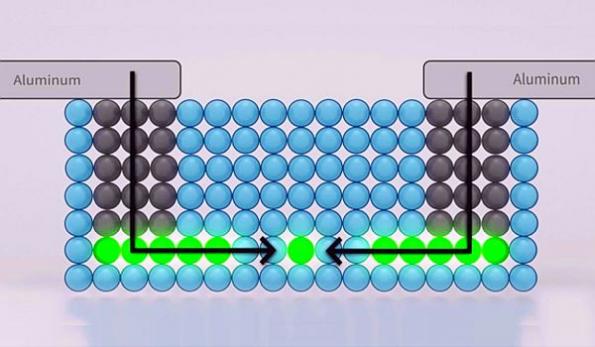The relentless quest for miniaturization has propelled electronics into an era where the very foundation of information processing is being redefined. At the forefront of this revolution lies the concept of single-atom electronics, a paradigm that evokes the metaphor of a grand tapestry woven from the intricate threads of quantum mechanics. This article explores the burgeoning field of atomic-level logic, illustrating its implications for future technologies and the unique appeal it holds for both scientists and society.
As we delve into the underpinnings of single-atom electronics, it is essential to appreciate the historical context of electronic components. Traditional transistors, the workhorses of modern electronics, have once been the epitome of miniaturization. These devices, based on silicon, are now reaching physical limitations dictated by classical physics. As feature sizes shrink towards the nanometer scale, challenges such as quantum tunneling and thermal fluctuations threaten the stability and predictability of electronic circuits. In light of these challenges, the quest for viable alternatives has birthed the exploration of single-atom transistors.
Single-atom transistors signify a radical departure from conventional electronics, analogous to reducing a symphony orchestra to a solitary virtuoso. By harnessing the properties of individual atoms, researchers can achieve an unprecedented degree of control over electronic behavior, opening the door to possibilities that were once relegated to the realm of theoretical physics. Using techniques such as scanning tunneling microscopy (STM) and atomic layer deposition, scientists have developed methods to create and manipulate single atoms in a manner that aligns with the exigencies of logic operations.
The allure of atomic-level logic is multifaceted. Firstly, the remarkable efficiency of single-atom transistors presents an opportunity to enhance computational density. Imagine a future wherein entire data centers can be reduced to the size of a conventional book, while simultaneously exhibiting exponential increases in processing capabilities. This prospect is underpinned by the principle that as devices shrink, their energy consumption decreases, offering a sustainable approach to the growing demands of information technology.
However, the lure of single-atom electronics extends beyond mere efficiency; it also encompasses the rich landscape of quantum phenomena that can be exploited for advanced computing paradigms. Quantum bits, or qubits, formed through single atoms could lead to the fruition of quantum computing—a realm characterized by its potential to solve problems considered intractable by classical computers. The manipulation of qubits harnesses the enigmatic superposition and entanglement principles, promising a transformative leap in computational power that could revolutionize fields ranging from cryptography to materials science.
Despite the exhilarating prospects, the journey towards fully realizing single-atom electronics is fraught with challenges. From an engineering perspective, the stabilization of single atoms within substrates presents significant hurdles. The integration of these atomic components into existing fabrication processes necessitates innovative approaches, as traditional semiconductor manufacturing techniques are ill-suited for the precision required at the atomic scale. As a result, interdisciplinary collaboration across materials science, physics, and engineering is becoming increasingly imperative in overcoming these barriers and advancing the field.
The societal implications of adopting single-atom electronics are equally compelling. The transition towards atomic-level logic, if realized, could signify a paradigm shift in energy consumption and data processing capabilities. The energy efficiency of single-atom devices could alleviate mounting concerns related to climate change and resource depletion. Furthermore, as these technologies become more integrated into various sectors, from healthcare to telecommunications, the democratization of advanced computing could facilitate unprecedented innovation and development.
This anticipatory vision of a future shaped by atomic-level logic is tantalizing; however, it is imperative to remain cognizant of the ethical considerations surrounding such technologies. The advent of powerful computational capabilities necessitates a discourse on cybersecurity, privacy, and the societal ramifications of pervasive surveillance. As the line between human activity and machine processing blurs, regulators and technologists alike must deliberate on the frameworks that will govern the use of such potent tools, ensuring that the advancements serve humanity rather than exacerbate existing inequities.
In conclusion, the exploration of single-atom electronics represents not only an evolution in the realm of computational materials but also a profound reimagining of our technological landscape. This nascent field combines the intricate dance of quantum mechanics with the meticulous artistry of atomic manipulation, weaving a fabric that could potentially underlie the next generation of electronics. The promise of enhanced efficiency, unprecedented computational power, and sustainable practices beckons us to embrace the realm of atomic-level logic, ushering in an era defined by the convergence of science and innovation. As this discipline matures, it invites us to ponder not only the technological marvels we may unlock but also the ethical avenues we must traverse to ensure that our advancements genuinely benefit society.












